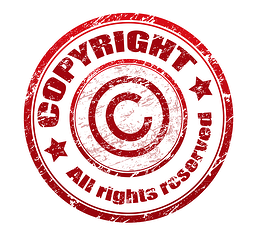Remember Napster? Remember the high-profile Napster vs Metallica situation?
As you may recall, Metallica argued that Napster, by allowing users to download songs for free, was promoting theft. They were right. Anytime you take something without paying for it, that's technically theft. Their warnings are more acute than ever as content "sharing" has continue to proliferate online. 
Take the issue of how to source images, for example. Images, along with written content, are the bedrock of your social media, blogging and content marketing strategies. But many times the temptation to "borrow" someone else's image is irresistible. This dilemma exists in a moral gray area where much of the Internet resides. There IS a right way and a wrong way to uses images on sites like Pinterest, and lucky for you, that's the topic of today's post.
Feeling Tempted to Source Copyrighted Images? Ask Yourself: WWKD? (What Would Kant Do?)
Of course, no post on how to source images legally would be complete without a shout-out to the famous philosopher Immanuel Kant (1724–1804.) Kant argued that actions are "morally right" in virtue of their motives. Actually, we're not sure what that means, so let's just cut to the chase: If you feel compelled to "borrow" images without proper attribution, you won't get "caught" in the leading-a-Wall-Street-executive-out-of-a-courtroom-in-handcuffs sort of way; however, Google's search algorithm may know and punish you by dropping your site in search results. And isn't that worse? But even if that doesn't alter your moral calculus, consider this: using free stock images, as boring as they may seem, will not incur Google's wrath. So with that convoluted moral philosophy lesson behind us, let's get down to the nitty-gritty.
"Fair Use" and the Importance of Attribution and Linking to Original Sources
Pinterest's copyright policies are blunt: they can disable and terminate accounts who repeatedly infringe on the copyrights of others. The guidelines underlying the use of images on Pinterest, Google Images (and any other site for that matter) are predicated on, first, the rule that you do need permission to use them. There’s a concept called "fair use" that attempts to make life easier for all involved parties. Without getting into the legalese, many images can be viewed through the lens as "fair use." So our advice is simple: play it safe by properly attributing the original source. After all, Pinterest's terms of service encourages "full attribution" and linking to original sources and provides clear guidance on how to do it.
Want Free Images? Ask Yourself: WWMD? (What Would Metallica Do?)
We repeat: Metallica had a point. Napster was home to copyrighted works that other people could simply take without paying. But of course, there are dozens of sites that provide free stock photos that eliminate the need for the aforementioned attribution stuff. Furthermore, as previously noted, you can happily use images from free sites without being punished by Google. Sites like the Stock.xchin, Openphoto.net, and Unprofound all provide high-quality, compelling stock photos free of charge. Bookmark them and use them without guilt (or the face of Lars Ulrich hovering over your shoulder.)






